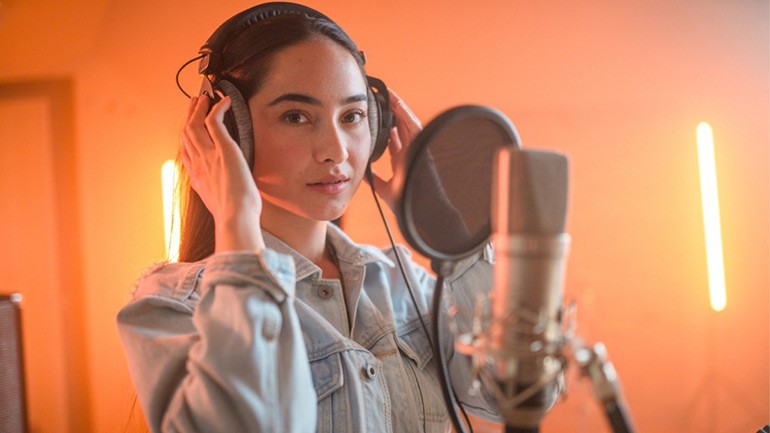The Right Way to Use Monitor Volume
Making headphone mixes that are properly balanced—and easy on the ears

Learning to create a comfortable headphone mix when overdubbing vocals or other parts is an essential skill for home-studio operators, one that involves knowing what kind of headphones are right for the job, as well as how much rhythm track to use, adapting to the needs of volume-sensitive guests, and more.
Choose your gear. In general, studio headphones come in two flavors—“open-back,” which allow some sound to escape (and vice-versa), and “closed-back,” which have speakers that are fully sealed and therefore provide good isolation and minimal sound spill. While open-back models are a good choice for mixing sessions, conventional wisdom holds that closed-type headphones are preferable when recording, say, a lead vocal, particularly when using a hot condenser mic that could easily pick up any headphone leakage and create instant phasing problems and other weirdness. On the other hand, some may find the closed-cup experience too isolating or may prefer the feel and tone of an open-back model. Conclusion: go for comfort and make any necessary adjustments along the way (such as trimming the headphone volume when using open-backs for recording).
Shorter bursts are better. No matter how good your gear is, remember that your ears are delicate machines and need the occasional time-out to function properly. This is especially true for those who mainly work with headphones—with the sound source that close, not only do your ears tire faster, but prolonged exposure can also lead to permanent damage. Using nearfield monitors (placed at a safe distance of 3 feet from your sitting position) at least part of the time is helpful, but even so try to limit your listening to 30-45-minute intervals with healthy breaks in between.
Balancing act. Probably the most challenging part of making a good monitor mix is finding a suitable balance between backing track and performer volume when overdubbing. Naturally, there are all kinds of variables—setting the levels on an acoustic-based song is likely to be simpler than something more boisterous like R&B or rock. And while some singers prefer ample track in their “cans” so they can push a bit harder during the take, others may be sensitive to track volume, or want to hear more of themselves in the headphone mix.
Monitoring alternatives. There are a few viable alternatives for those who really detest headsets. For instance, when doing vocal overdubs you could use a small speaker as a monitor source, situated directly in front of the singer (so that it faces the “dead” side of a condenser mic in cardioid mode), but with enough distance to deter excess leakage. Another old trick is using just one end of a set of headphones or a standalone earpiece, allowing the vocalist to leave either ear uncovered. If you find this approach preferable, there are many headphone makers that offer a special single-ear design just for this purpose.






Community
Connect with BMI & Professional Songwriters